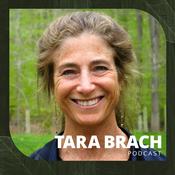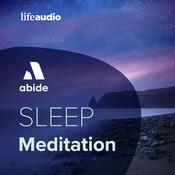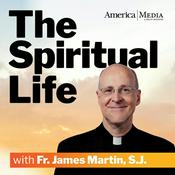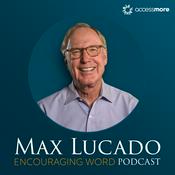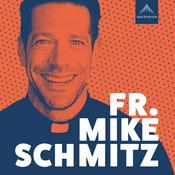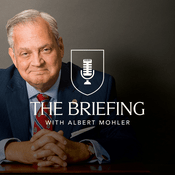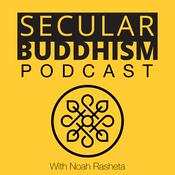Available Episodes
5 of 307
- Live Happily in the Present MomentThis 59-minute talk was given on May 13, 2004 in New Hamlet, Plum Village, France. The talk was given between retreats to the monastic community and a small number of lay residents and guests. Thank you to Chân Phúc H?i for writing the summary and providing a time-stamped transcript. Thay begins this talk with a description of the concept of Apranihita or aimlessness. Our tendency is to be constantly running, constantly searching. We need to stop and reestablish ourselves in the here and now. Walking meditation is a wonderful way to learn how to stop. Can we walk with freedom and happiness? The Buddha said it was possible to live happily in the here and now. In the sutra given to the White Clad People (Upasaka Sutra) “live happily in the here and now” occurs five times. The first time our planet was seen from space we were made aware of what a beautiful and precious place the Earth is. The Earth is the bastion of life. It is a real paradise. The pure land is right here. What are you searching for? Are you looking for love, for freedom, for understanding? We need to get in touch with the wonders of life. Our practice is to get in touch. Mindfulness is a very concrete way to go home to the here and now. Having a sangha is of great benefit. In a sangha we remind each other that it is fortunate to be alive. If we know how to stop running, how to take care of ourselves, how to water seeds of happiness every day, we can transform our suffering. Doing this together is wonderful. Thay tells a story about visiting a prison. Even in prison a person can be free. And even outside of prison a person can be a prisoner of anger, despair, and hate. Freedom is freedom from fear, from anger, from forgetfulness. And our practice is the practice of freedom. Our practice is the practice of awakening. The twenty-four brand new hours given to us every morning are a precious gift. The day when we lay down to die we cannot bargain for another day. Today is available, and if we are lucky, tomorrow will also be available.--------11:27
- How do we Practice as a Sangha2000-06-03 (77-minutes) – It’s been a long while since posting a dharma talk for you all, and for that I apologize. Today for our Day of Mindfulness at Deer Park Monastery, we heard this talk from June 3, 2000 at New Hamlet, Plum Village. The talk is part of the 21-Day Retreat that year with the theme of Eyes of the Buddha. For this talk, we take a deep dive into what it means to be sangha. Some of what Thay shares is for the monastic sangha, but can be equally applied to a lay community. Right out front, Thay says the very minimum number for a sangha is four people. He then proceeds to outline the steps for the Sanghakarman Procedure. From this presentation, the rest of the talk focuses on the Six Togethernesses. A real sangha must practice all six. Body. Being physically present in one place. Mindfulness Trainings Sharing. Dharma discussion. Nonverbal action. Presence. (View, insight, understanding, wisdom) Speech. Loving speech. Calm and gentle. Material resources are shared equally Happy and joyful. Synthesis of all ideas. Toward the end, Thay explains the difference between the core sangha and the extended sangha. I hope you enjoy the talk.--------1:17:10
- Making Peace with OurselvesThe date is November 25, 2001 at Plum Village, Upper Hamlet. This is the first talk of the 3-month winter retreat. The talk is offered in English. 00:00 Connecting with Green Mountain Dharma Center and Deer Park Monastery09:10 Chanting34:12 Going Home to Ourselves41:08 Drinking our Tea43:22 Mindfulness of our Body46:04 Body52:50 Feelings56:26 Perceptions1:01:38 Mental Formations1:05:14 Consciousness1:06:01 Reclaiming Our Sovereignty1:14:01 The Sangha1:17:58 The Energy of Mindfulness1:24:55 Healing from Within1:29:04 Looking Deeply1:37:53 Building a Sangha What is the 3-month retreat? How do we practice together? Our practice is to build brotherhood. How do we know if we are succeeding in our practice? To practice to be happy together. It is a kind of daily food. Through our sitting mediation, walking meditation, eating in mindfulness. These help build our sisterhood and brotherhood. This is done by building peace within ourselves so it can manifest around us. The Energy of Mindfulness Buddhist meditation has a universal value. The energy of mindfulness help us to there, to be fully present in every moment of our daily life. To be there for us. Our body, our feelings, our perceptions – they are all there, but are we taking care of them? Our practice is to go home to ourselves and tend to our feelings, perceptions, and our body. Our tendency is to run away from ourselves. Drinking our tea. Are we fully present to drink our tea? Or are you drinking like a machine? Mindfulness of drinking. Everyone can do that. If we are not careful, we may follow our habit. Mindfulness is the energy to be there for what is going on. Through breathing, walking, eating, etc. Mindfulness is the kind of energy that helps you to be fully there. This is the first action for peace. Have you abandoned yourself? Mindfulness can help you come back to yourself. We start with our body. Your breath is part of your body. When you breathe in, bring your mind back. Mindful breathing. This is the best way to begin making peace. It is the door in which you can come back to yourself. We can restore ours sovereignty in the territory of ourselves. The Five elements (Skandhas) The first element is form – your physical body. Our physical body is like a river; it is always flowing. The first thing a practitioner should do is make peace with our body. Learn how to calm and renew your body. Learn the art of deep and total relaxation. Give our body a chance to rest and restore itself. It is an action of peace. In the Harvard medical school, they have studied the role of meditation in healing the body. Breathing in, I calm my body. Breathing out, I smile to my body. The second element of your person is feeling. The painful feelings, pleasant feelings, neutral feelings. All kinds of feelings. Like the body, there is a river of feelings. They are born, remain, and affect other aspects of our person. Are you taking care of your feelings? Your emotions? Our tendency is to run away. Breathing in, I am aware of my feeling. Breathing out, I calm my feeling. They are like a suffering baby and they have been left alone. We need to take care of this territory of feelings. The third portion of our territory is perception. We perceive realities, we have an image of ourselves. That is a perception. We have an image of the other person, or other group of people. This is a perception. And very often they are wrong. And because of our wrong perceptions, we suffer very deeply. There are a lot of contradictions. In the Buddhist tradition, the physical body is called a formation. Formation is a technical term that means anything that manifests based on conditions. For example, a flower. Our body is formation. Our feelings are also a kind of formation, but we call it a mental formation. The fourth element is mental formations. According to Buddhist psychology, we have defined 51 mental formations. And mindfulness is one of the mental formations; we should develop our mindfulness. The fifth domain is called consciousness. Consciousness contains all the kind of seeds that can manifest into mental formations. It is like the soil keeping all the seeds and when the rain falls then mental formations manifest. Reclaiming Our Sovereignty The territory of our person is very large. And if we don’t know how to bring peace into our territory, then we cannot help our brother or sister to do the same. To restore peace, it is the act of peace. And it is a collective effort. We are the king/queen that rules our territory, but we have not been very good at taking care of our territory. We have lost our sovereignty. We have to go home and rely upon our sangha to help us restore and reclaim our sovereignty. We have our in-breath and out-breath to support us in this endeavor. And when the quality of your breathing has improved, you can step into your body and channel the peace and harmony with your breathing. That is the practice. Our society is organized in such a way that we’re encouraged to do the opposite of taking caring of ourselves. Television, magazines, etc. help us to run away from ourselves. When you don’t have anything to do, we often look for something to do. We are afraid of coming home to ourselves because we may encounter the war within ourselves. We have been running away. The buddhist practice helps us return to our kingdom without fear. With the energy of mindfulness of our sangha. We need the sangha. It is very difficult to do alone. The sangha can help us embrace our body, our feelings, our perceptions. The Buddha offers many concrete methods to restore peace and well-being. The Energy of Mindfulness The energy of mindfulness has several functions. The first function is to be there for yourself. To help us produce our true presence. Through mindful breathing and mindful walking. This is the basic practice of Plum Village. The second function is to recognize what is there. What is there is your body, your feeling, etc. And the third function of mindful is to embrace. Not fighting. Just embracing. The fruit of the practice depends on the strength of your mindfulness. If you practice well, then it will be enough to embrace your pain. This can bring about relief and calming. We can create an environment that is favorable for this practice. Healing is not really coming from outside. It can come from the inside. It is inherent in our body and consciousness. Just like an animal is injured retreats to take care of the body. If we worry too much, then we make the situation worse. We need to rest. We can believe in the capacity of our body. This can also apply to our consciousness too. Every wound can be healed. Through tenderly embracing our pain in the body and in our feelings. The next function of mindfulness is to look deeply. Look deeply into what? Our feelings, our perceptions. To identify the roots of our pain and our suffering. Our ill-being. Looking deeply into the nature of our anger, our pain, then we can see the kind of food we are using to feed them. This is related to consumption. And practicing mindful consumption is the way out. Nothing can survive without food. To know what to consume and what not to consume. Looking deeply requires concentration. Which then gives you insight to know what to do. Practical Example: a feeling of despair. Building a Sangha Thay shares of coming to the West and feeling all alone. I had to come to call for a cessation of war in Vietnam. And so he began to build a sangha to feel supported and not be alone. Building sangha is the most important task. Without a sangha, we cannot have refuge. Even if you are a teacher or a Buddha, you still need sangha. A group of people can change the course of history. Peace and well-being always begins with yourself. Learn the methods from the sangha. Have faith in the practice. And you can feel peace and well-being. Coming together for three months is our opportunity to build brotherhood and sisterhood. The next Buddha is Mr. Love. And will take the form of the sangha. The Five Skandhas working in harmony, that is a sangha.--------1:55:32
- Happiness is Right HereA 43-minute segment on the third door of liberation – aimlessness. The talk takes place on August 17, 2007 during the Stonehill College retreat during the U.S. Tour. The retreat theme is Mindfulness, Fearlessness, and Togetherness and this is part four of a four-part series. Aimlessness You don’t put something in front of you and run after. It is a wonderful practice. It can bring you peace. We have the habit of running after something. Fame. Profit. Wealth. Even enlightenment. People imagine that monastics are running after enlightenment. But that is not the practice. If you have received the Five Mindfulness Trainings, you belong to the lineage of Linji. His teaching is very strong on this aspect of running. Don’t run after what you already are. Stop running. Happiness is right here. In this very moment. Just one step. Peace. Joy. Healing. Enlightenment. Are all in the present moment. This is the teaching of aimlessness. Are you enlightened already? But how can we make plans for the future? The answer lies in the teaching of aimlessness. Enlightenment is not something you strive for. The moment you are aware you are breathing in, that is a moment of enlightenment. We also practice to be aware of the present moment. We don’t live in a dream anymore. There is no way to enlightenment. Enlightenment is the way. To be there for each other. At the breakfast table. There are things we can do so that mindfulness is there. If we organize well, breakfast can be a celebration of life. So, let us take care of the present moment. The future is contained in the present moment. And let us not lose ourselves in regret about the past. Nirvana In the Buddhist tradition they speak of nirvana. Nirvana is the absence of notions. Notions like birth and death. Nirvana is not a place or space located in time. We have a notion of time. That we have birth and death. We hear the story of the flame. Pairs of opposites. Birth and death Being and nonbeing Coming and going Sameness and otherness Sangha building.--------43:30
- Falling in Love with a CloudA 13-minute segment on the second door of liberation – signlessness. The talk takes place on August 17, 2007 during the Stonehill College retreat during the U.S. Tour. The retreat theme is Mindfulness, Fearlessness, and Togetherness and this is part three of a four-part series. Signlessness The second door of liberation. Sign here is the appearance. When we look deeply we have to see the nature of signlessness. The seed of corn has an appearance, we see it as a seed of corn. But when it grows, it no longer appears as a seed of corn. But the seed of corn is still there; it’s only changed how it appears. Say you fall in love with a cloud. Thay helps us smile by recognizing our beloved cloud. It has not died. A cloud never dies. This too has been confirmed by scientists. Piece of paper. Can you establish the birthdate of this sheet of paper? Was it at the paper mill? But the paper hasn’t come from nothing. Even if we burn the sheet of paper, it will continue. Being and non-being are just ideas. They do not apply to reality. These are conventional designations. More examples. A drop of water falls from the sky. What happens? Does it become nothing? Before you were born. Were you there? Did you exist before the moment of conception? It is all a continuation. The same applies to “so called” death. In the moment of great despair, great anguish, signlessness is there to rescue you.--------13:38
More Religion & Spirituality podcasts
Trending Religion & Spirituality podcasts
About Thich Nhat Hanh Dharma Talks
Dharma offered by the Venerable Zen Master Thich Nhat Hanh.
Podcast websiteListen to Thich Nhat Hanh Dharma Talks, Tara Brach and many other podcasts from around the world with the radio.net app
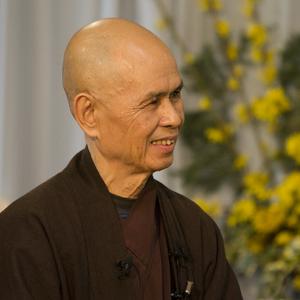
Get the free radio.net app
- Stations and podcasts to bookmark
- Stream via Wi-Fi or Bluetooth
- Supports Carplay & Android Auto
- Many other app features
Get the free radio.net app
- Stations and podcasts to bookmark
- Stream via Wi-Fi or Bluetooth
- Supports Carplay & Android Auto
- Many other app features


Thich Nhat Hanh Dharma Talks
Scan code,
download the app,
start listening.
download the app,
start listening.
